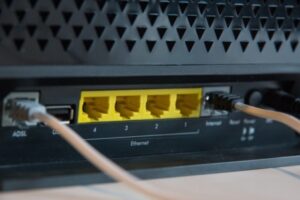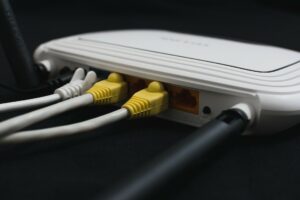Wireless Access Points, commonly referred to as WAPs, allow wireless devices to connect to networks through a wireless standard. Additionally, WAPs are also known as hotspots.
An investment in a WAP can be crucial for your small business or home office because of the strong connection you will have wherever you may need it. While some people may need it for business, others may need it for general home use or gaming. Most often, WAPs are used in points where the WiFi router is having trouble reaching.
In this article, we are going to take a look at the 7 best WiFi access point devices according to our experience and research. But, before we dive into that, let’s take a look at some of the benefits of WAPs.
Benefits of Wireless Access Points
It is no secret that even the most expensive WAPs are now available to almost everyone. Having one of the best WiFi access points on the market could benefit you in numerous ways, especially if you are running a business.
- Compatible with major cable internet providers including Xfinity, Spectrum, Cox and more. NOT compatible...
- [Compatibility] 12V Power Supply Adapter Compatible with Netgear, Linksys, Asus,Motorola, Motorola/Arris...
You don’t want to be lagging on your business meeting with clients. Moreover, you probably get angry if you have a high ping while gaming. An excellent WAP offers you the following advantages:
- Easily extends the range of the WiFi
- Supports Dual-Band WiFi
- Wide transmission range
- Robust signal both inside and outside the building/home
- Take your WiFi outdoors
- Easy to Setup
- Lower ping
IEEE Wireless Fidelity Protocol
To understand what wireless access points are, first, we need to see what the IEEE Wireless Protocol stands for. IEEE Wireless Fidelity Protocol, also known as WiFi, is a technology used to provide wireless local area networking (WLAN) between devices. Devices that use WiFi can connect to the internet using a wireless router or access point. It is used in various applications, including home and office networking, public hotspots, and cellular data networks.
The IEEE 802.11 WiFi specification defines the protocol used for WiFi communication. The specification includes many features that help ensure reliable and secure communication. Some of these features include:
– Authentication and encryption to protect data from unauthorized access
– Support for Quality of Service (QoS) to prioritize substantial traffic
– Beamforming to improve signal strength and reliability
WiFi is a widely adopted standard, with various amendments and extensions that have been published over the years. The most recent amendment is IEEE 802.11ac, which defines several new features, such as increased data rates and support for multi-user MIMO. WiFi is continually evolving, with new features and capabilities added to the specification.
What is A WiFi Network?
A WiFi network is a connection that is shared with several devices in a business or home via a wireless router. The router is connected either directly to the ISP (Internet Service Provider) or a modem. After that, it acts like a hub that delivers internet connection to all wireless-capable devices.
Difference between Router and Access Point
Even though they are really similar, the little things split them into being called routers and WAPs. We’ve encountered this question too many times to avoid it. So, let’s get right into it and help you understand what the difference is.
What Is A Router?
It’s a network device that carries two vital functions:
- It connects several phones, tablets, and PCs to create a managed local area network.
- It provides access to the internet to all internet-capable devices which are connected.
A LAN (Local Area Network) can be created by simply bringing in a router and connecting multiple devices to it. Routers these days allow people to connect devices via both wireless and Ethernet cables. Please note that for the router to deliver data to the devices which are connected to it, it needs to be connected to ISP (Internet Service Provider) via Ethernet.
What is An Access Point?
An Access point or WAP is a device that serves as a portal for devices to connect to LAN. The access points are usually used when you want to extend the wireless coverage of your network either in your home or office.
In addition, it is quite often used when you can to increase the maximum number of users connected to the same network. While routers have fewer allowed users, some WiFi access points can handle up to 400 users connected simultaneously.
Difference
The main difference is that a router serves as a hub that can create a local area network. From it, you can manage all communications and devices.
On the other hand, a wireless access point is a sub-device in the hub that the router creates, which provides the same local area network just to a place where the router can’t reach (wireless). While routers can be used as access points, not all WAP devices can work as routers.
Which is Better?
Well, the answer to this would depend on your needs. For small businesses, a router may be a better option. However, if you have a medium-sized business, a wireless access point is what you want to go with.
Router Setup and Network Maintenance
Let’s take a look at how you can set up your router, what network maintenance is, and why it’s important. Before we start, make sure to check your internet connection because the setup experience will be frustrating if the connection is terrible.
1. Manual
Don’t rush into setting up immediately before checking the manual. It may contain some information that is crucial in setting up the router. Moreover, the manual may have the router’s default username and password on it, so it’s important to have it at all times.
2. Place
Make sure to find the best place for your router so you can have the most benefit from it. Don’t leave it exposed to the sun as it may damage the box and change colors outside.
3. Connect to the Internet
Plug the Ethernet cable in your router and check the router’s LED lights. You can tell if you’ve successfully connected to the internet by the lights. It usually takes 3-5 minutes to configure the connection.
If it takes longer than that, make sure you plugged the Ethernet cable into the correct port.
4. Configure Router Gateway
One of the ways to configure the router is by using the router’s web dashboard. Take a look at the back of the router, and it should have the IP address printed on it. If there is no IP in your preferred browser, type 192.168.1.1 – the most common IP address.
5. Username & Password
The username and password could be printed on the back of the router as well. If they are not, please look for them in the manual. The most usual default username and password is admin, admin. Make sure to change them as soon as possible as they are not secure at all.
6. WiFi Password
Lastly, the Wi-FI password! Once you’ve changed your username and password, it is recommended to change your WiFi password as well. Most routers prompt users to change their passwords once they sign in. However, if you aren’t prompted to change it, make sure to do it.
Network Maintenance
For all those wondering, network maintenance is doing what it takes to keep a network up and running. Below you’ll find some tips on it:
1. Reboot
This isn’t the standard resetting just by taking the adapter out from the power source. Find a needle or a paperclip and locate a tiny hole on the back of the router. Once you’ve located it, press the button and hold it for 30 seconds. The LED lights should indicate when the connection is online.
2. Keep the Router Cool
As we’ve mentioned earlier, it is important to find a good spot for your router to keep it cool. Don’t expose it to heat as it may overheat and stop working. Additionally, don’t put books on it or place them in a box. As with anything else, the router needs to breathe to work properly.
3. Updates
As your operating system is getting updates to work at its best, your router needs to do the same. Even though it’s not a common thing to check for updates, it is an important one. Visit the official website of your router to get the latest updates.
Network Name (SSID)
SSID is short for Service Set Identifier. When you try to connect to WiFi, you’ll see a list of SSIDs. WAPs broadcast SSIDs so WiFi-capable devices can find and connect to the internet through them.
Your SSID should be printed on the back of your router. However, if the router was configured before, the printed SSID and the current one won’t likely match. The easiest way to find your network name is by opening your phone and scanning for WiFi. The one with the strongest connection should be yours.
Another way of checking is signing in on the router gateway. From there, you can change it, disable it or hide it.
Hidden Networks
One of the privacy and security measures you can take is by hiding your network. It’s not the most effective one when it comes to security, but it’s certainly far safer than an exposed network. But what does a hidden network mean?
It means that the WAP does not broadcast the SSIDs, and it’s a way to hide its name. Even though it’s hidden and not visible, it’s there. If you know the network details, you can still connect to it. Here’s how to connect on your Windows 10:
- Click the WiFi icon in the lower-right corner.
- Click Network – WiFi.
- Click Hidden Network & Connect.
- Enter your Network Name (SSID).
- Click next, and you’ll be prompted to input the password.
- After you’ve entered the password, you will be connected to your hidden network.
Common Types of Access Point Configurations
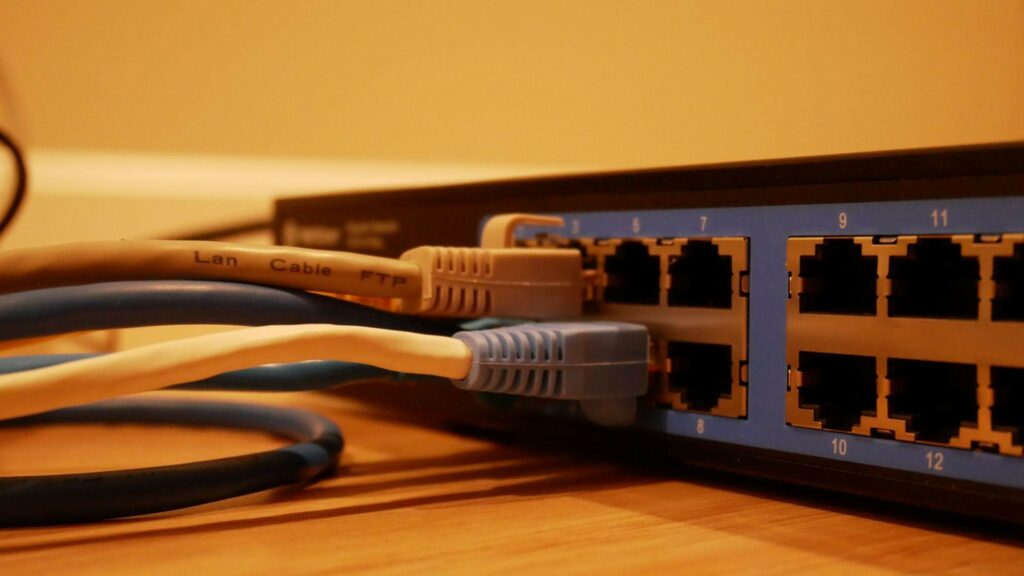
Repeater Access Point
A mesh extender or an access point can be set up as a standalone repeater which will allow you to extend the range in your home or overcome an obstacle that blocks the radio communication.
This repeater transmits traffic between the wired network and wireless users by sending data to an access point or another repeater, which of course, is connected to the same wired network.
Root Access Point
This access point is mesh-capable configured with a wired connection to the network and delivers an internet connection to the extender access point.
Bridges
While a root access point requires a wired connection, bridges can be used to set up a connection both root and non-root. This mode allows multiple access points to transmit communication with the purpose of joining multiple local area networks.
Workgroup Bridge
A workgroup bridge or WGB is a mode that can be set up on Autonomous Access Point. Workgroup Bridges access points are usually used to pass on traffic from devices that are not wireless capable to the wireless network.
MAC Address Filtering in Computer Network
Before we dive into this, you need to understand what MAC filtering is:
You need to know that there are two types of network adapters –
1. A wired adapter allows people to set up an internet connection to either router or modem through Ethernet.
2. A wireless adapter that connects to WAPs or commonly known as hotspots. Each adapter has its own unique identifier, known as MAC address which identifies and authenticates the PC.
What is MAC Address Filtering?
MAC stands for Media Access Control, and it’s a filtering security method that is based on access control. This is often used when you want to set a list of devices you need on your WiFi, and that can be either allowed or denied.
The devices which are denied cannot access your WiFi. Once a device connects to your WAP, you can see it on the router gateway website. Once you have the MAC address, you can directly disallow the MAC address from having a connection to your WiFI on the gateway.
Power over Ethernet (PoE)
Power over Ethernet, or you’ll often see PoE, was invented way back in 1997 by PowerDsine. Since then, it has evolved and has been used in many different areas. As you can guess, PoE is a technology that allows internet cables to carry electrical power. Let’s take a security camera as an example. Usually, the camera needs two connections when it is being installed. A power connection, in order to get the system running and a network connection, so it can transmit the recording to another display. However, if the camera has power over the Ethernet feature, it will require just one cable as it will receive power from the cable. There are many advantages why you should opt for power over Ethernet wireless access point.
As we’ve mentioned earlier, an investment in a proper WAP can be a total game-changer for your small business, home office, or gaming. So far, we’ve covered a few paragraphs with information on WAPs, routers, internet connectivity, etc. The real reason why you visited this article is to get an idea of what one of the best WiFi access points should have and how to pick one. Please note that this list is not in the order of which WAP is the best one. It’s simply a collection of the best WiFi access points.
Netgear WAX214 WiFi 6 PoE+ Access Point
The first WAP on our list is the Netgear WAX214 WiFi 6 PoE+ Access Point, and it’s no surprise why it’s here. It comes with MAC Address Filtering, WPA2, and WPA3 support features. The area where this WAP shines most is that it can support 40 concurrent devices and can handle 128 devices at once. Netgear has done a hell of a job designing the WAX214. It’s compact and easy to set up and install. In addition, this WAP has mounting brackets and can be placed high up on a wall, or even better, on the ceiling. The WAX214 is a dual-band WAP which means it supports both 2.4GHz and 5GHz. It’s really inexpensive and supports PoE (Power over Ethernet).
Zyxel WAX610D WiFi 6 PoE Access Point
Second, on our list of the best WiFi access point devices is an access point designed by no other than Zyxel. The WAX610D is a true WAP 6 as both frequencies, 2.4GHz and 5GHz, support the standard. It carries the feature of being a PoE-enabled WAP, and compared to the others; it’s a bit more expensive. In addition, it has a quad-core processor that guarantees fast transmission time. It was specifically designed to run 24/7 because of its heat-spreader inside. Unlike many others, this WAP can be installed via the Nebula mobile app. Moreover, the Nebula app is a control center for most Zyxel devices, not just the WAX610D. So, unlike the WAX214 from Netgear, the WAX610D can simultaneously handle two devices connected to the WAP. That’s designed on purpose as Zyxel wanted the users to experience optimal performance.
Cisco 240AC WiFi 5 Access Point
The Cisco 240AC WAP is an ideal choice for small and medium-sized networks. Unlike the previous two, the Cisco 240AC is still based on the WiFi 5 standard. However, that doesn’t mean it can’t perform on a high level. It features 1GB of RAM along with a Qualcomm quad-core processor. According to Cisco, the 240AC can handle up to 400 devices connected simultaneously. In addition, it comes with a flat Ethernet cable which you can connect to a PoE switch. It comes with a single LED light which is on the front of the router that serves as a power indicator.
Just like the Nebula app, Cisco has its own app, which you can use to configure and monitor the access point. If you can’t find the perfect spot on the ground, there are mounting holes at the back of the unit you can use to attach it to the wall.
EnGenius EWS850AP Outdoor Access Point
The EnGenius EWS850 AP is the next on our list of best WiFi access point devices and with a good reason. As the title suggests, it’s a WAP that can be used outdoors. Carrying speeds of 2.4GHz and 5GHz makes this device a dual-band access point. It also comes with WPA2/WPA3 encryption, making the network fast and secure. Moreover, the EWS850AP is also powered through PoE, but it comes with a 1Gbit Ethernet injector, so you don’t have to buy it. Finally, it is an IP67 rated device for harsh environments. In fact, IP67 means that this WAP can last for half an hour if dropped in a water meter deep. In addition to being waterproof, the EWS850AP is wholly dust-proof and weatherproof as well.
DrayTek VigorAP 1000C Access Point
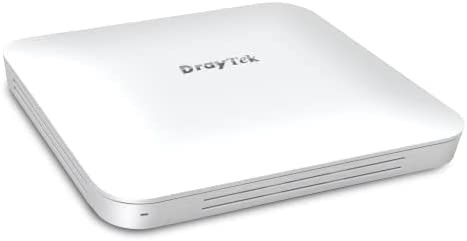
Manufactured by DrayTek, the VigorAP 1000C is a dual-band access point device. It has a web dashboard which allows easy management. The VigorAP 1000C carries a self-optimizing mesh feature built-in that ensures your wireless network is on the fastest track. According to DrayTek, this access point can handle up to 384 devices connected to it at once. It has a simple and elegant design with holes for walls and ceilings. In addition, it carries features such as options for multiple SSIDs, WiFi Scheduling, and because of self-healing mesh networking, it has a strong performance. Even though it is a Power over Ethernet device, it comes with a DC 12V 2A adapter. As for configuration, you can either download their app or directly from the web dashboard.
Netgear Powerline 500 WiFi Access Point
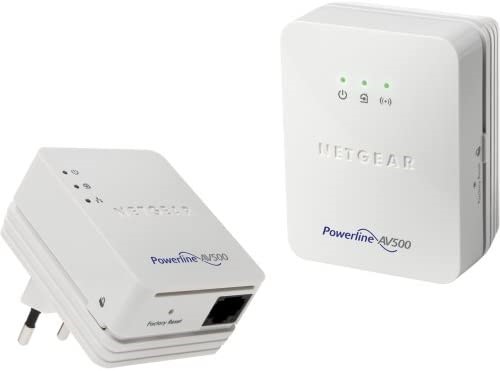
Next on our list of best WiFi access point devices is another Netgear manufactured device. The Powerline 500 comes with a compact design and a pick-a-plug LED Indicator. All you need to do is plug one of the adapters in a socket near your modem or router for configuration. Connect them with an Ethernet cable and wait 2-3 minutes, and it configures with no issue at all. As for the other adapter, plug it in the place where your WiFi is having trouble reaching. As long as you have a power socket, the adapter will create a new WiFi network you can connect to. It has network cables included, so you don’t have to worry about that. You can additionally configure the access point by accessing the gateway on your browser.
UniFi UAP-AC-PRO
Last but not least, on our list of best WiFi access point devices, we have the UniFI UAP-AC-PRO. It’s a WAP that can perform at a high level, both indoor and outdoor. It broadcasts signals up to 400 feet (122 meters). UniFi has its own mobile app, which can be used to configure and manage the device. This can also be done on their web application via a browser. It is a dual-band access point that is powered over Ethernet. It has a rounded design with a blue LED in the center that indicates the status of the access point. According to UniFi, the UAP-AC-PRO can handle up to 200 devices connected to it simultaneously. Furthermore, it’s an inexpensive device, so anyone can afford it.
Even though there are tons of different wireless access points, we’ve managed to narrow it down to 7 of the best WiFi access point devices. These wireless access points got a place on this list based on their rating, user experience, prices, etc. Each one of them has its own pros and cons. Later in this article, we’ve included another access point that we think is the best choice for streaming movies and TV shows.
Best for businesses
If you are looking for a business-grade WAP, the Cisco 240AC WiFi 5 Access Point is your best bet. It supports both 2.4GHz and 5GHz and ranges up to 400 feet. This WAP also provides PoE+ (Power over Ethernet), which means that it doesn’t require an additional power supply. This WAP is perfect for small businesses as it can handle up to 50 users at the same time. In terms of design, it’s simple and elegant with a white matte finish.
Best value for home use/gaming
The EnGenius EWS850AP Outdoor Access Point is the best outdoor WAP on the market. It’s IP67 rated weatherproof, comes with a built-in antenna, and has an extended range of up to 2 miles. This WAP is perfect for hotels, schools, or any other business that needs an outdoor WAP. It also supports PoE+, so you don’t have to worry about providing power to it.
What’s the best wireless router for streaming movies and TV shows?
Our top pick is the Netgear Nighthawk R7000. It’s not only powerful, but it’s also rather fast and can handle numerous devices simultaneously. It’s perfect for households that have multiple devices streaming video content at the same time. Plus, its powerful performance will ensure that your movies and TV shows stream smoothly, without any buffering. At around the $200 price point, the Nighthawk R7000 is an excellent value for your money.
And although it doesn’t support beamforming or MU-MIMO technology, which are two key features on top routers from Linksys and Asus, respectively, we still think its performance is good enough to be a solid choice if you’re looking to stream high-resolution 4K video without buffering constantly.
We tested this router at its stock speeds, which were identical to the top-tier routers from Linksys and Asus. Although it doesn’t support beamforming or MU-MIMO technology, which are two important technologies on premium routers, we still believe its performance is sufficient enough to be a good choice if you are looking to stream high-resolution 4K videos without buffering constantly.
Understanding the technology (and jargon) of wireless routers
Wireless Router: A device that allows devices to connect to a WiFi network. A wireless router is used to create a home network.
Wired Network: A network that uses cables to connect devices.
WiFi: Technology that allows devices to connect to a network without the need for cables.
WiFi Adapter: A device that allows devices to connect to a WiFi network.
Network: A group of devices connected to each other, usually for the purpose of sharing files and resources.
LAN: A local area network is a network that is limited to a specific geographical area, such as a home or office.
Network Switch: A device that allows multiple devices to connect to a network using cables.
Ethernet Cable: A cable that is used to connect devices to a network.
Conclusion
To sum things up, WiFi is one of the most popular methods of connecting devices to a network. Whether you’re a newbie or a seasoned pro, you’ve probably seen the many different kinds of access points that are available for purchase. It can be hard to determine which access points are the best to buy with these many options. We hope that this blog has helped you understand what makes some access points better than others to make informed decisions on your next purchase.
We’ve also shared our top picks for the best routers for streaming movies and TV shows. So, If you’re looking for a powerful router that can handle multiple devices simultaneously, the Netgear Nighthawk R7000 is a great choice. And if you’re looking for an outdoor WAP, the EnGenius EWS850AP Outdoor Access Point is the best option available.
FAQ
What’s the difference between a WiFi extender and a WiFi access point?
A WiFi extender is a device that strengthens the signal of an existing WiFi network. It works by amplifying the signal and redistributing it to where it’s needed most. A WiFi access point, on the other hand, creates a new WLAN network altogether. It’s essentially a router that broadcasts its SSID and allows devices to connect to it. It also allows you to have two separate networks in your home, one for guests and one for your devices.
How many access points do I need in my house?
This is a question often asked by people looking to buy or upgrade their home WiFi network. The answer to this question depends on several factors, including the size of your house, the number of devices you have connected to your network, and the type of devices you are using.
It really depends on the layout of your house, but most homes need at least one to get a good WiFi signal. A general rule of thumb is that you need one access point for every 1,000 square feet of space. So, if your house is 2000 square feet, you would probably need two. If you have a lot of devices connected to your network, or if you are using devices that require a lot of bandwidth, such as 4K TVs, you may need more than one.
What is a Range Extender?
You can guess its purpose by its name. A range extender expands the reach of your current WiFi network. The difference between a range extender and a wireless access point is that range extenders connect wirelessly to routers, so they must be placed where the WiFi signal is strong. An access point relies its functionality on a wired connection, thus making the internet connection available in certain spaces where the router can’t reach.
What is a WIFI 6 access point, and what are its benefits?
A WIFI 6 access point is a device that allows devices to connect to the internet using the WIFI 6 standard. This standard offers faster speeds and better performance than previous standards.
The main benefits of a WIFI 6 access point are faster speeds and better performance. This can be particularly useful for tasks such as streaming video, gaming, or having multiple devices working on the cloud simultaneously. Additionally, the WIFI 6 standard is more reliable and efficient than previous standards, meaning that devices will connect more quickly and use less battery power.
Can I use routers as WiFi access points?
Most routers can be used as WiFi access points, but it is not recommended to do so. Routers are not specifically designed for this purpose and may not provide the best performance. Furthermore, the router might be too basic for managing large amounts of data or devices and is likely not to rely on a stable power source. It’s always recommended that instead, you buy an access point. Although this device may cost more upfront, it can last longer due to its stability. Additionally, the access point will have features that the router does not, such as guest networks and strong security.
Can I use a switch as a WiFi access point?
Yes, you can use a switch as a WiFi access point. However, there are some limitations to this. First, you will need to connect the switch to your modem and have a LAN cable running from the switch to your laptop. This way, you can share the internet connection, and all devices connected through the switch will be able to access it. The switch can be handy, but if you want to have complete control of your internet connection, in that case, we recommend going for an access point instead.



